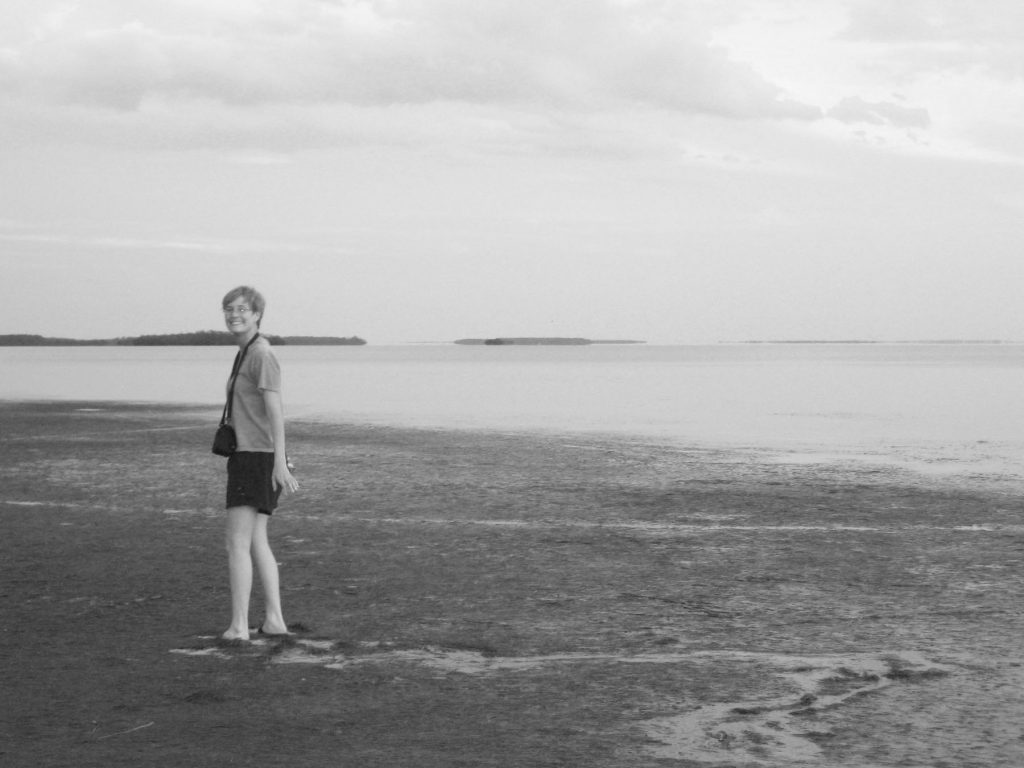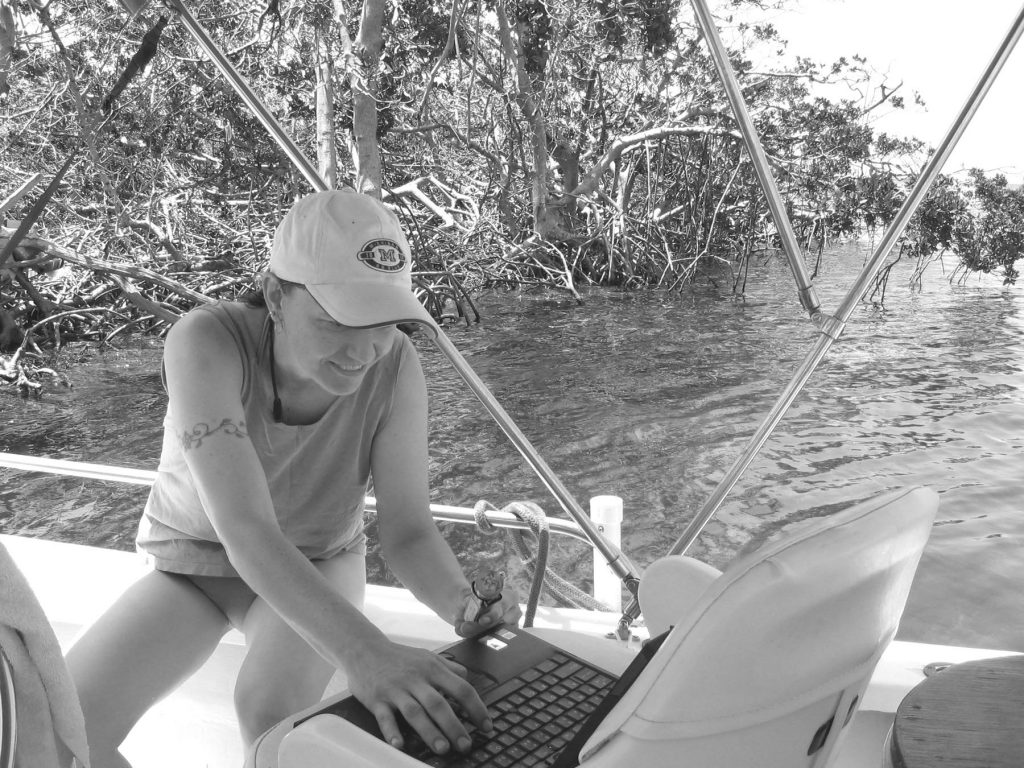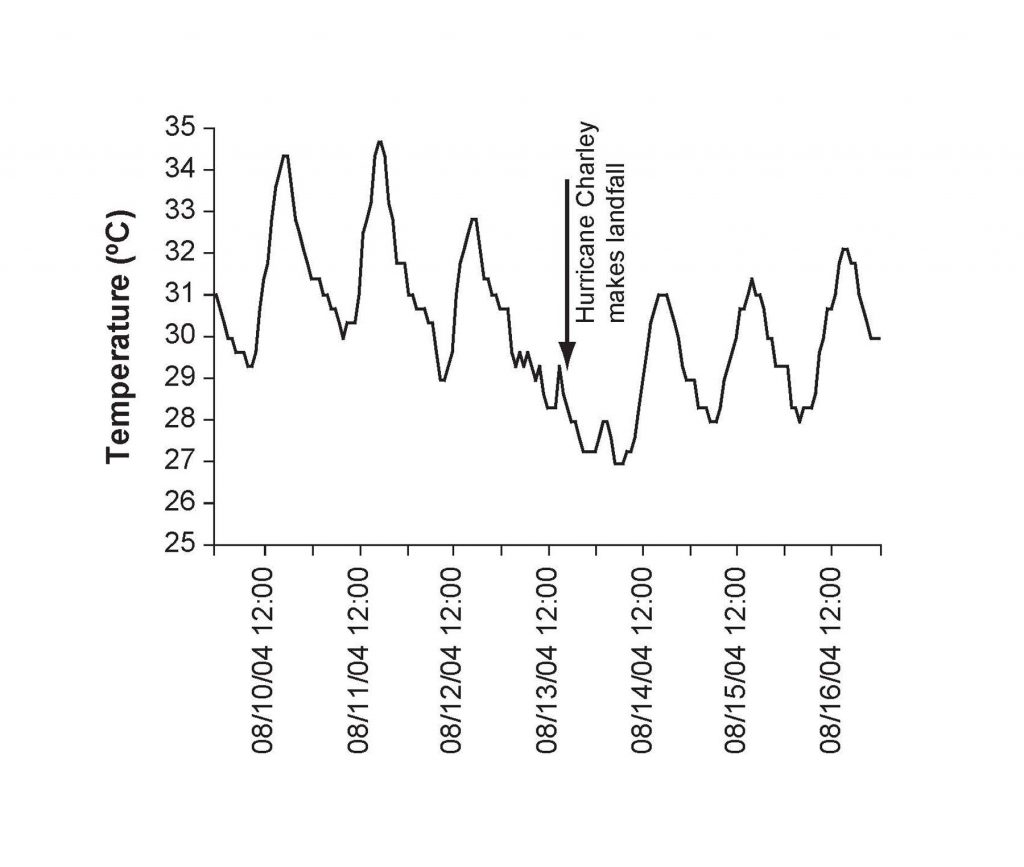There were so many sand gnats gnawing at our bare legs and arms that it was difficult to concentrate on locating clams in the exposed, grassy mudflat.
Yet, finding a good sample of live, native quahog clams was a major objective of our June 2005 fieldtrip to Pine Island Sound. So, persevere we did, until our count totaled 19. Our team consisted of geochemist Donna Surge and her graduate student Ann Goewert, both from the University of North Carolina, and me, an environmental archaeologist long associated with the RRC. We were ably assisted by Pat Hagle of Pineland, who captained the boat.
Another objective was to retrieve an electronic data logger, called a tidbit, that had been recording water temperatures on an hourly basis since before Hurricane Charley came over Pine Island Sound on August 13, 2004. Here too, we were successful and moreover, fascinated, to see that the tidbit had recorded Charley’s signature in the form of a dip in temperatures.

The shells of our collected clams, the temperature data, and water samples collected previously are all being studied by Donna and Ann in order to better understand the relationships between seasonal changes in water conditions and how they are recorded as isotopic/geochemical variation in the clam shells themselves. Then we will apply this under- standing to ancient clam shells in order to interpret past climate change at seasonal time scales. For these, I have selected shells discarded by Calusa people at Pineland over a time span from about 400 to 2,000 years ago. By this method, we hope to produce a record of climate variation that relates to the lives of Pineland’s original residents while at the same time contributes to the understanding of global climate change for the last two millennia.
This article was taken from the Friends of the Randell Research Center Newsletter Vol 4, No. 3. September 2005.

